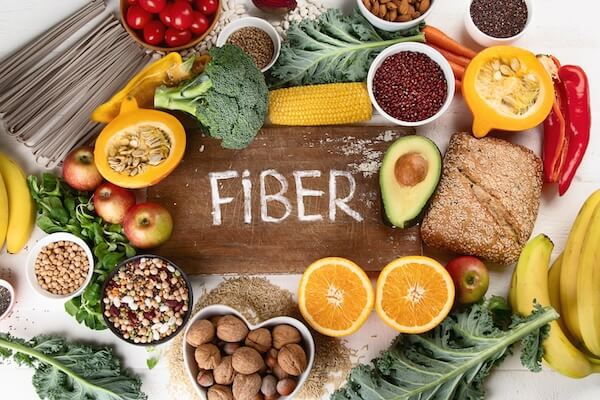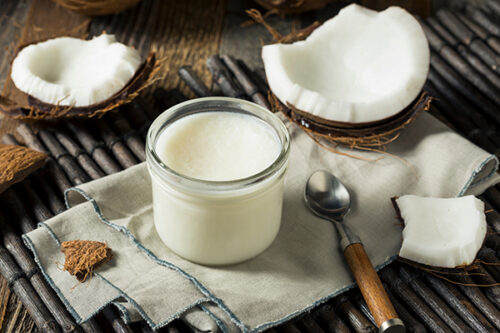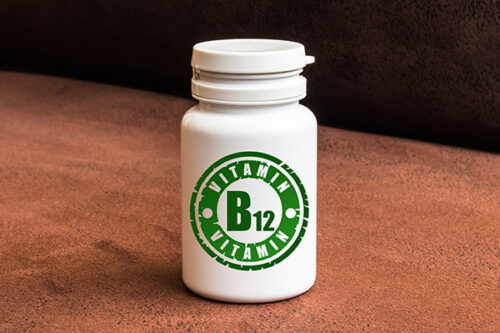In Search of the Perfect Bowel Movement

This article originally appeared in the September 2002 McDougall Newsletter and has been updated in January 2024.
By John McDougall, MD
Interest in bowel movements may seem perverse to many but is actually a very common source of worry for most people and a topic of discussion for more of us than you can imagine. Young children and the elderly do not find this subject off limits – in fact they seem to enjoy talking about their daily accomplishments. Walk through your local drug store and observe the aisles of laxatives, stool softeners, bulking agents, stimulants, and antidiarrheal remedies – somebody must have concerns – they’re spending billions on these products. For example, Americans spend $725 million a year on laxatives alone.
The amount, consistency, and frequency of bowel movements vary among people and most of this difference is not caused by slight dissimilarities in the human intestinal tract, but rather by the things we choose to put into our bodies – our food choices.
To my knowledge no one has ever tried to define the perfect human bowel movement – based on my professional experiences as a doctor, and my personal experiences, I will now attempt to do this (even though I risk permanently damaging my squeaky clean reputation).
A bowel movement occurs when feces present in the rectum cause distention, which leads to reflex contraction of the smooth muscles of the rectum and relaxation of the anal sphincter. About this same time the abdominal and diaphragm muscles contract and the stool is expelled. Let’s begin with what is common.
What is the typical Western bowel movement?
In Western societies, “normal” stool frequency ranges from 2 to 3 times a day to 2 to 3 times a week. However, I have met patients who moved their bowels less frequently than every 12 days and this monumental task required a laxative or two. For someone on the American diet, the urge to defecate can be accompanied by feelings ranging from mild discomfort to distressing pain, felt in the mid to lower abdomen. The active passage of the bowel movement is often accompanied by rectal pain and bright red rectal bleeding. Most commonly a stool formed from the typical American diet requires muscular straining to pass – recall the grunting and groaning sounds echoing from the bathroom walls. The time required for the typical bowel movement can be measured by the length of one to two stories in Reader’s Digest. After all that effort, more often than not, one is left with a feeling of incomplete emptying. The stool itself varies from “tiny rock-hard fecal marbles” to “tubular play dough,” about an inch in diameter, and dark brown in color. The more meat consumed the darker the stool color.
Clean up afterward (with toilet tissue) is sometimes difficult because of the stickiness and greasiness of the feces. The grease in the bowel movement is from the undigested fats and oils in the foods consumed. Moist tissues are often required to complete the cleansing operation.
What is the ideal bowel movement?
Ideally, the abdomen will be completely comfortable until the time to eliminate, and then an urge, with no pain or distress, will be felt in the lower abdomen. There is no break-neck rush to the bathroom – and if necessary, a short delay is easily achieved until the proper facilities are located. The actual movement is painless and accompanied by a sense of pleasant relief, and occurs after one light abdominal push (no severe or repeated straining). Maximum “downloading time” will be less than 60 seconds. A feeling of complete evacuation is experienced and any further urge to defecate disappears until some time later when the rectum is filled again. One to three movements occur daily – usually in the morning, shortly after rising. The stool is large, unformed (more like a cow-plop than a tube), and colored shades of light yellow, orange, and brown – depending upon foods consumed. Clean up afterward, with a small amount of toilet tissue, is effortless. (I always wondered why my dogs, cats, and birds never required toilet tissue – I guess it is because I always fed them properly – the foods they were designed to eat.)
Constipation – the All-American Movement
An official definition of constipation is: difficult or infrequent passage of feces, hardness of stool, or a feeling of incomplete evacuation. Between 16 and 34 percent of children are reported to be constipated and 20% of people over the age of 65 years.1 The worse a person’s diet the more likely they are to report constipation. Nearly 70% of people on the very low-fiber, high meat and dairy, Atkins diet report constipation.2 I have observed that what is “normal” and what is “constipation,” is often based upon what the person is used to. Many people confess to me that they only realized they had been constipated all their lives after they changed to a diet based on unrefined plant foods.
Constipation is the most common complaint of people with irritable bowel syndrome (IBS). This is one of the most common gastrointestinal problems seen in the practices of primary care and gastroenterology doctors. Much of the information here applies to people with “constipation-dominant IBS.” A future newsletter will discuss this common condition in detail.
Common Reasons for Constipation
The Low-Fiber American Diet
Dietary fiber makes up the bulk of the stool and is mostly undigested carbohydrate.3 Dietary fiber is commonly divided into soluble and insoluble fibers. Soluble fibers include pectin, guar gum, B glucan, and psyllium and this class causes modest reduction in blood cholesterol and blood sugars. Insoluble fibers are mainly responsible for providing bulk to the feces, and these include cellulose and lignin.
Do not think of fiber as the bristles of a broom that will scratch your intestinal lining. Fiber is actually microscopic chains of sugar (carbohydrate). The difference between dietary fiber and dietary carbohydrates is the sugars forming dietary fiber are connected by linkages that our intestine lacks enzymes to digest – so the chains of sugar travel all the way through the small intestine intact (undigested). With the dietary carbohydrates (found in starches, vegetables, and fruits) our intestinal lining has enzymes that cleave the connections between the sugars, so they are broken down into simple sugars, which are then absorbed into our body.
Like dietary carbohydrates, fiber is only found in plant foods. There is not a speck of fiber in any beef, chicken, fish, lobster, egg, milk, or cheese. On the American diet the few grains people do consume, like rice and flours, are highly refined into “white” rice and flour – and in the manufacturing processes most of the fiber is removed. Therefore, on the American diet people consume 6 to 10 grams of dietary fiber a day. On the McDougall diet, the amount is 30 to 100 grams daily.
When there is little fiber in your diet, there is little substance to form a stool (a few dead cells and a paltry amount of fiber) and the result is, in the worst case, a few tiny rock-hard fecal marbles. Because these marbles are small in volume they provide little distention of the rectum, resulting in constipation. Besides the small size, there are other reasons the American stool just doesn’t want to come out.
Dairy Proteins Paralyze the Bowel
Early in my practice (46 years ago) I was surprised when people swore they followed my diet, but still complained they were constipated. I soon learned how to answer this dilemma with a question, “When are you going to give up the skim milk on your cereal?” Dairy protein (not the fat or sugar) causes severe constipation in many people. This was clearly demonstrated in a study published in the New England Journal of Medicine in 1998, of 65 severely constipated children. 4 They complained of only one bowel movement every 3 to 15 days and didn’t even respond to strong laxatives (lactulose and mineral oil). Forty-four of the 65 (68%), however, found relief of their constipation when taken off the cow-milk. Evidence of inflammation of the bowel was found on biopsy and anal fissures and pain were commonly associated with the constipation. All of these were resolved with the elimination of the cow milk. When cow-milk was introduced into their diet 8 to 12 months later all of the children developed constipation within 5 to 10 days. So it is not just the lack of fiber in the diet that binds you up, but also other qualities of animal foods.
| Less Common Causes of Constipation
Anal Fissures and Hemorrhoids – Painful conditions can produce a spasm of the anal sphincter muscle, and fear of defecation can cause retained stool. Diseases – Diseases of the nervous tissues and muscles, such as scleroderma, multiple sclerosis, Parkinson’s disease, spinal cord injuries, and stroke, can cause constipation. As can scarring, inflammation from diverticulitis, tumors, and cancer that produce mechanical compression of the intestine, and sometimes complete bowel obstruction. Metabolic disorders such as dehydration, diabetes, and hypothyroidism can also cause constipation. Immobility and inconvenience – due to injury or illness, especially when a bedpan is required, or a schedule that makes elimination inconvenient or unsociable will result in retained feces that become dehydrated and hard to pass. Laxative use – Because of real or imagined constipation many people become dependent upon laxatives. Stimulant laxatives are particularly troublesome because the bowel becomes dependent on this stimulation and will not contract sufficiently with the normal reflexes caused by filling the rectum with stool. Medications – Many medications, including pain medications (narcotics), antacids containing aluminum or calcium, antispasmodic drugs, antidepressant drugs, tranquilizers, iron supplements, anticonvulsants for epilepsy, antiparkinsonism drugs, and antihypertensive drugs, especially calcium channel blockers, commonly cause constipation. Pregnancy – Pregnant women are encouraged to drink at least four glasses of milk a day and eat plenty of protein in the form of meat. No wonder they are usually constipated. Pregnancy is a normal healthy stage in a woman’s life – not an illness – and regular bowel function will occur in pregnant women on a healthy diet of unrefined starches, vegetables, and fruits. Travel – Constipation due to travel is caused by the changes in diet, water intake, and schedule. Conscious avoidance of unhealthy foods and dehydration alleviates this disturbance. |
Eat Right and Exercise to the Perfect Bowel Movement
In order to have a normal healthy bowel movement you need to put the right things into your colon – a process which begins at the dinner table. Your diet needs to be based upon unrefined starches like potatoes, beans, rice, corn, sweet potatoes, and whole wheat breads and pastas with the addition of fruits and vegetables. No animal products, and especially no dairy protein of any kind, should be a part of your diet. The effects of eating dairy products, and/or a fiber deficient diet, are usually experienced the very next day and you shouldn’t expect normal function to return for 3 to 4 days after discontinuing these foods and reintroducing healthy ones.
Priming the Pump:
Years of poor bowel function characterized by constipation can cause residual problems, like bowel distention and a “lazy bowel,” especially if there has also been laxative abuse. Due to physically diminished forces, an overdistended bowel contracts less effectively. To make things worse, when the bowel muscles have been stimulated for years to contract by the chemicals in laxatives, rather than the reflex caused by natural distention from filling of the rectum, the bowel becomes insensitive to the presence of the stool – it waits for the drugs.
To break the laxative habit and cure a “lazy overdistended bowel” takes some planning, patience, and above all, training. The bowel must be brought back to its normal condition of contracting from the stimulus of fecal distention. It needs to be exercised so the muscles can grow strong again. The first step is to eat right and eat plenty of food (this is no time for “dieting”). Fill the bowel with fiber and remove all “paralyzing” dairy proteins. It may take several days before the urgency to have a bowel movement is experienced. Be patient, nothing bad is going to happen to you – the stool formed from a healthy plant-based diet is soft and moist and will eventually pass. (If you think something is wrong then see your doctor, because occasionally people have already developed a fecal impaction which must be mechanically removed by the doctor.)
Sometimes it is necessary to “prime the pump,” so to speak, by artificially and purposefully over-filling the bowel. Wheat bran may effectively accomplish this, or a non-absorbable sugar, called lactulose (doctor’s prescription required) may be even more effective at filling the bowel and causing a reflex contraction. Once the movements start with this additional help, the days following should experience ever-improving bowel movements. When the movements are effortless, the dosage of the wheat bran and/or lactulose can be slowly decreased, and eventually stopped.
Extra Help
Exercise may also be beneficial. The effect of physical activity on constipation seems likely, but has not been proved. Some explanations for benefits are: an effect on colonic motility, decreased blood flow to the gut, biomechanical bouncing of the gut during running, compression of the colon by abdominal musculature, and increased fiber intake as a result of increased energy expenditure.5Likely people who exercise are also diet conscious and as a result eat a diet higher in fiber.
Fluid Intake (water) is recommended by many primary care physicians and gastroenterologists; however, despite common medical advice to consume extra fluid for constipation, one study found that extra fluid intake in normal healthy volunteers does not produce a significant increase in stool output.6 The extra fluid was efficiently absorbed in the gut and the body simply eliminated the extra fluid as urine. However, another study found with the addition of 25 g of fiber and 1 to 2 extra liters of water daily there was an increased stool frequency in patients with chronic functional constipation.7Maybe the extra fiber is necessary for the water to make a difference?
Fruits add both dietary fiber and water to the diet. Some fruits like prunes and kiwifruit have mild stimulatory effects on the bowel, promoting bowel movements.8,9
Fiber Supplements like partially hydrolyzed guar gum (PHGG), SunFiber for example, and wheat bran, produced improvements in IBS symptoms (abdominal pain and bowel habits). PHGG was better tolerated and preferred by patients.10
Flaxseed increases bowel movements by about 30%.11 Flaxseed can be consumed as a cereal, like Uncle Sam Cereal©, or flaxseed can be added to any grain before cooking – add 2 to 4 tablespoons of flaxseed to each cup of grain, such as rice. Flaxseed may also reduce the risk for colon carcinogenesis.12
Wheat Bran can add bulk to the stool and encourage effortless bowel movements. This product can be purchased as “Miller’s bran” or in various cereals advertised as “bran.” Wheat bran (10 to 15 grams/day) has also been associated with a decreased risk of developing colon cancer.13,14
| Laxatives
There are many forms of laxatives and they include: Stool Bulking Agents: Metamucil, psyllium (ispaghula, isapgol, seed husk), methylcellulose (Citrucel), and sterculia increase the volume of the stool. Stimulants: Castor oil, senna, dioctyl sodium sulphosuccinate (Dioctyl), Bisacodyl (Carter’s Little Pills; Dulcolax; Fleet Bisacodyl). Osmotic Agents: Lactulose, magnesium hydroxide, magnesium sulfate Rectal Emenas and Suppositories: Dulco-lax, Glycerol suppositories, phosphate enemas. Bulking agents and osmotics are much preferred over stimulants, because the bowel easily becomes dependent upon stimulants. |
Need for a Medical Evaluation
If anyone continues to have abnormal bowel movements after a change to a plant-based diet, and especially if pain or bleeding with the bowel movements occurs, then a doctor’s examination is indicated. Evaluation will likely include an examination of their large bowel, which can be simply and cost effectively done with a barium enema x-ray and a sigmoid exam. However, in part because it is much more profitable for them, most gastroenterologists will want to do a colonoscopy which has more risks, costs, and requires an anesthetic for the procedure. Either approach will rule out most serious diseases that cause constipation and IBS.
More than just Constipation
In the months that follow you will learn the role diet plays in constipation-related diseases, like irritable bowel syndrome (IBS), and how straining in an effort to move the constipated American stool causes damage to the body, leading to hemorrhoids, varicose veins, and a hiatal hernia. In the meantime, work on attaining “the perfect bowel movement” with the things you learned so far. What a relief to have that nasty nagging difficulty behind you – your whole day will be improved by your new found freedom to occupy your thoughts with issues much more important than “will I have a BM today?”
References:
1) Loening-Baucke V. Constipation in children. N Engl J Med. 1998 Oct 5;339(16):1155-6.
2) Westman EC. Effect of 6-month adherence to a very low carbohydrate diet program.
Am J Med. 2002 Jul;113(1):30-6.
3) Trowell H. Definition of dietary fiber and hypotheses that it is a protective factor in certain diseases. Am J Clin Nutr. 1976 Apr;29(4):417-27. Review.
4) Iacono G. Intolerance of cow’s milk and chronic constipation in children. N Engl J Med. 1998 Oct 15;339(16):1100-4.
5) Peters HP. Potential benefits and hazards of physical activity and exercise on the gastrointestinal tract. Gut. 2001 Mar;48(3):435-9.
6) Chung BD. Effect of increased fluid intake on stool output in normal healthy volunteers. J Clin Gastroenterol. 1999 Jan;28(1):29-32.
7) Anti M. Water supplementation enhances the effect of high-fiber diet on stool frequency and laxative consumption in adult patients with functional constipation. Hepatogastroenterology. 1998 May-Jun;45(21):727-32.
8) Rush EC. Kiwifruit promotes laxation in the elderly. Asia Pac J Clin Nutr. 2002;11(2):164-8.
9) Stacewicz-Sapuntzakis M. Chemical composition and potential health effects of prunes: a functional food? Crit Rev Food Sci Nutr. 2001 May;41(4):251-86.
10) Parisi GC. High-fiber diet supplementation in patients with irritable bowel syndrome (IBS): a multicenter, randomized, open trial comparison between wheat bran diet and partially hydrolyzed guar gum (PHGG). Dig Dis Sci. 2002 Aug;47(8):1697-704.
11) Cunnane SC. Nutritional attributes of traditional flaxseed in healthy young adults.
Am J Clin Nutr. 1995 Jan;61(1):62-8.
12) Serraino M. Flaxseed supplementation and early markers of colon carcinogenesis.
Cancer Lett. 1992 Apr 15;63(2):159-65.
13) Macrae F. Wheat bran fiber and development of adenomatous polyps: evidence from randomized, controlled clinical trials. Am J Med. 1999 Jan 25;106(1A):38S-42S.
14) Ferguson LR. Protection against cancer by wheat bran: role of dietary fibre and phytochemicals. Eur J Cancer Prev. 1999 Feb;8(1):17-25.
Recommended Articles

The Real Coconut Oil Miracle: How a High-Fat, High-Calorie Condiment Became a “Superfood”

Vitamin B12 Deficiency—the Meat-eaters Last Stand







